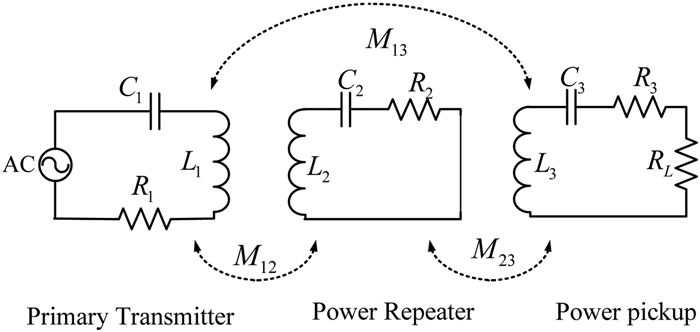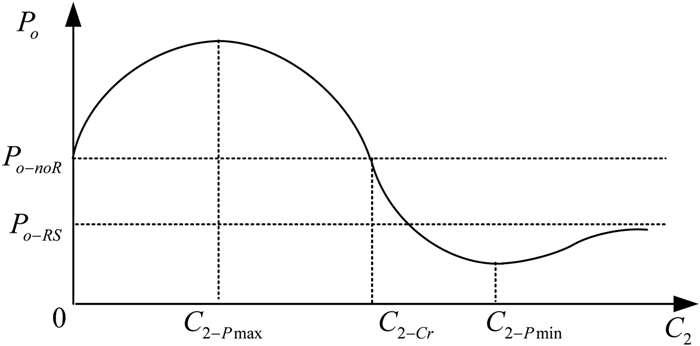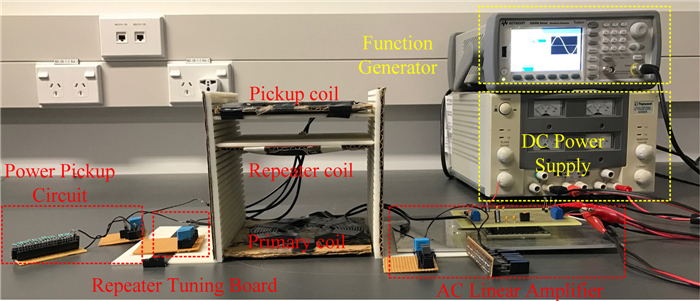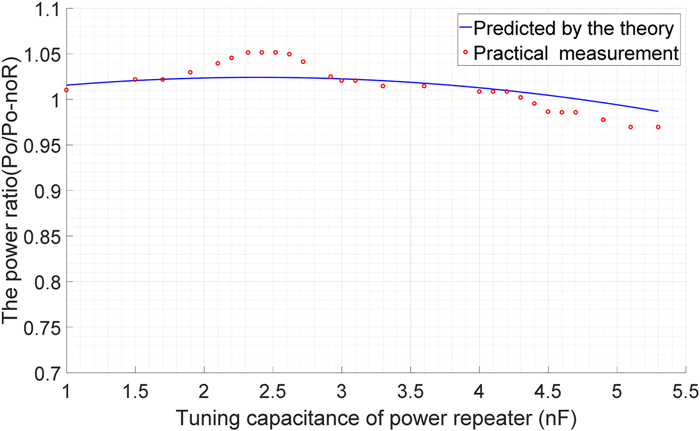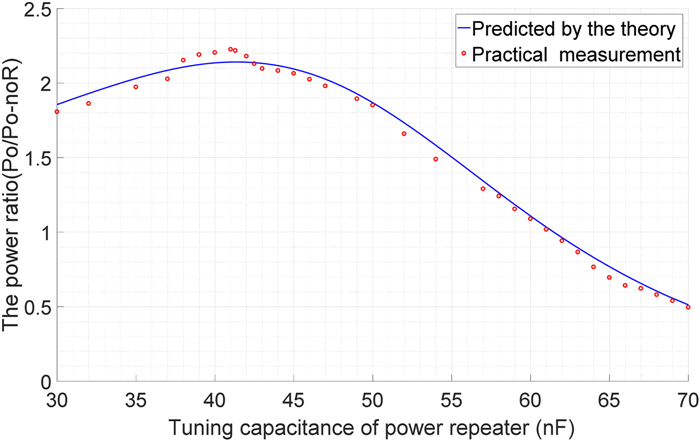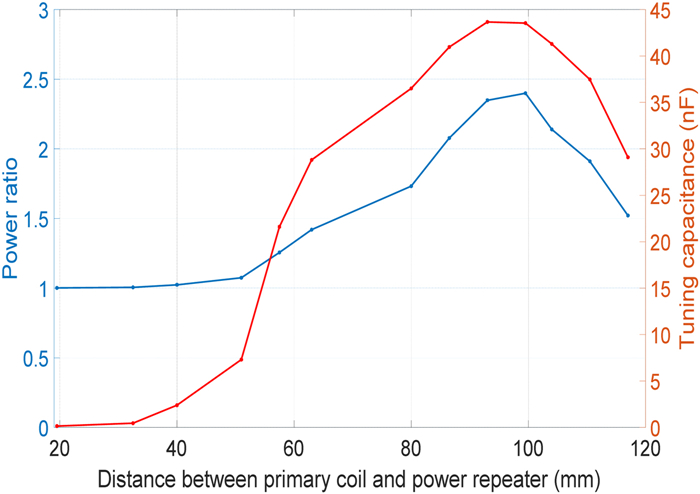-
About this article
Cite this article
Hua R, Hu A P. 2018. Effect of tuning capacitance of passive power repeaters on power transfer capability of inductive power transfer systems. Wireless Power Transfer 5(2): 97-104 doi: 10.1017/wpt.2018.3
Effect of tuning capacitance of passive power repeaters on power transfer capability of inductive power transfer systems
Abstract: Power repeaters are used to extend the power transfer range or enhance the power transfer capability of Inductive Power Transfer (IPT) systems, but how to tune the power repeaters to improve the system power transfer performance remains an unsolved problem. In this paper, studies of the effect of the tuning capacitance of the power repeater of an IPT system on the power transfer capability are presented. A theoretical model is established to analyze the output power of the system with the primary coil and secondary coil tuned at a nominal resonant frequency, and a passive power repeater placed in between. By analyzing the relationship between the tuning capacitance of the power repeater and the output power, a critical tuning capacitance which sets up the boundary between enhancing and reducing the output power is determined, and the optimal tuning capacitances corresponding to the maximum and minimum output power are also obtained. A practical IPT system with a passive power repeater placed at 40, 80, and 104 mm from the primary coil is built. It has shown that the practically measured critical capacitance and the optimal tuning capacitance for maximum power transfer are in good agreement with the analytical results.
-
Key words:
- Inductive power transfer /
- Passive power repeater









 Rong Hua graduated from the University of Auckland, New Zealand, with B.E. (Honours) degree in Electrical and Electronic Engineering in 2013. Currently he is pursuing his Ph.D. degree at the Department of Electrical and Computer Engineering, the University of Auckland. His research interests include wireless power transfer, inductive power transfer, and magnetic field power repeaters.
Rong Hua graduated from the University of Auckland, New Zealand, with B.E. (Honours) degree in Electrical and Electronic Engineering in 2013. Currently he is pursuing his Ph.D. degree at the Department of Electrical and Computer Engineering, the University of Auckland. His research interests include wireless power transfer, inductive power transfer, and magnetic field power repeaters.  Aiguo Patrick Hu graduated from Xian Jiaotong University, China, with B.E. and M.E. degrees in Electrical Engineering in 1985 and 1988, respectively. He received his Ph.D. from the University of Auckland in 2001 in Electrical and Electronic Engineering, and visited National University of Singapore (NUS) for a semester as an exchange postdoc research fellow. He has published 260 peer-reviewed journal and conference papers with about 4500 citations, authored the first monograph on inductive power transfer technology, and contributed four book chapters on wireless power transfer modeling and control, as well as electrical machines. He has been awarded the University of Auckland VC's Funded Research and Commercialization Medal in April 2017. Patrick is now a full professor in the Department of Electrical and Electronic Engineering, the University of Auckland, and his research interests include wireless/contactless power transfer systems, and application of power electronics in renewable energy systems
Aiguo Patrick Hu graduated from Xian Jiaotong University, China, with B.E. and M.E. degrees in Electrical Engineering in 1985 and 1988, respectively. He received his Ph.D. from the University of Auckland in 2001 in Electrical and Electronic Engineering, and visited National University of Singapore (NUS) for a semester as an exchange postdoc research fellow. He has published 260 peer-reviewed journal and conference papers with about 4500 citations, authored the first monograph on inductive power transfer technology, and contributed four book chapters on wireless power transfer modeling and control, as well as electrical machines. He has been awarded the University of Auckland VC's Funded Research and Commercialization Medal in April 2017. Patrick is now a full professor in the Department of Electrical and Electronic Engineering, the University of Auckland, and his research interests include wireless/contactless power transfer systems, and application of power electronics in renewable energy systems 



